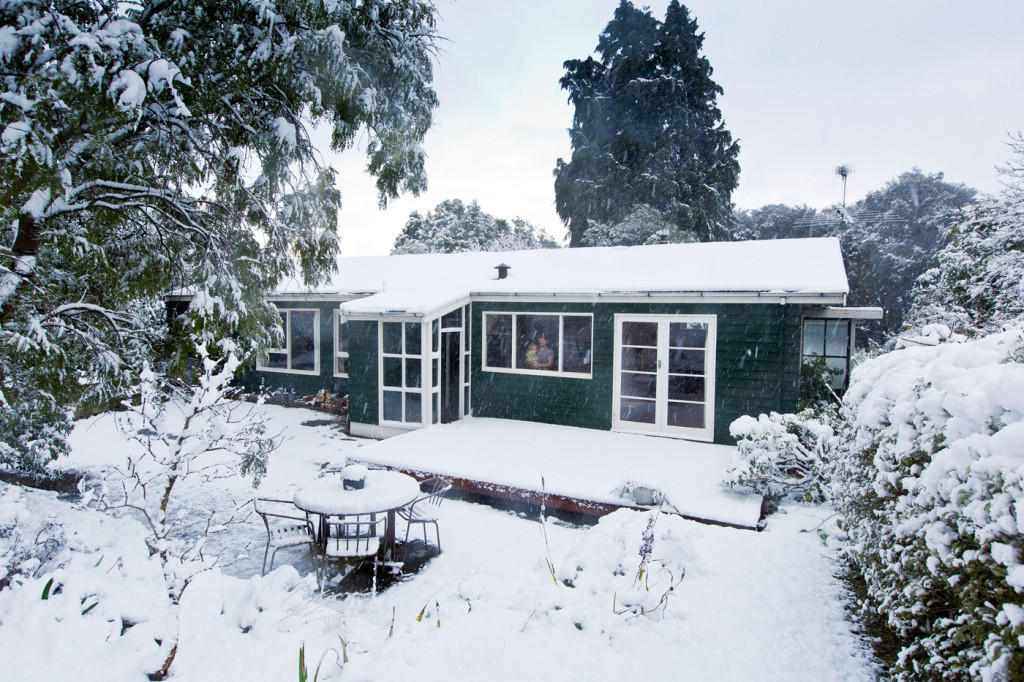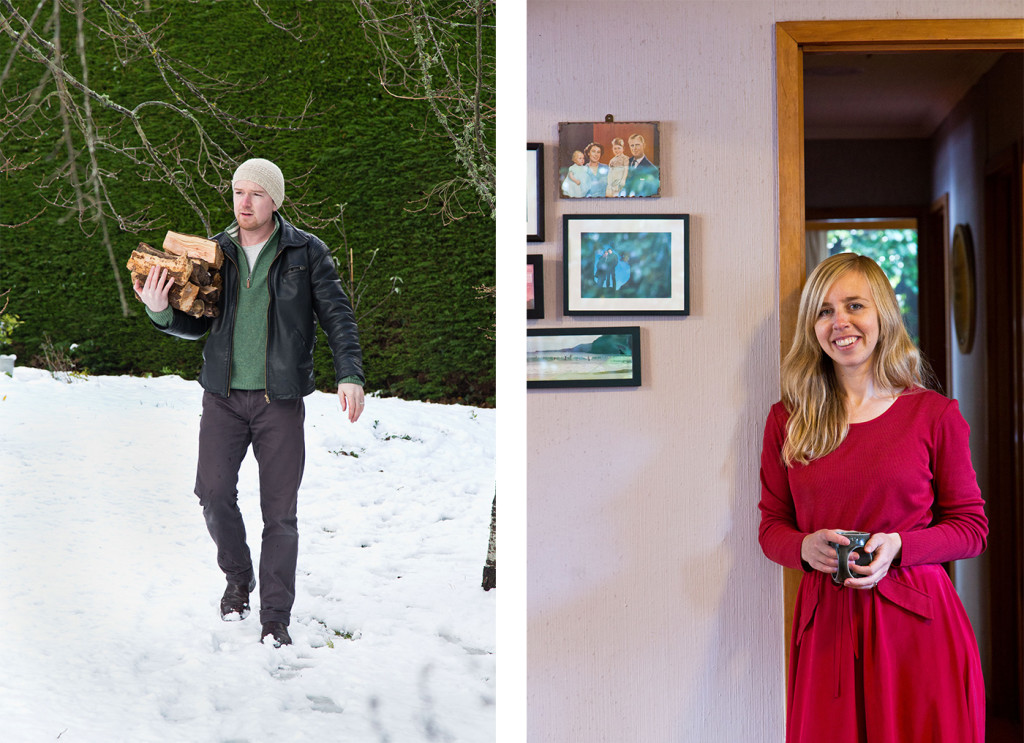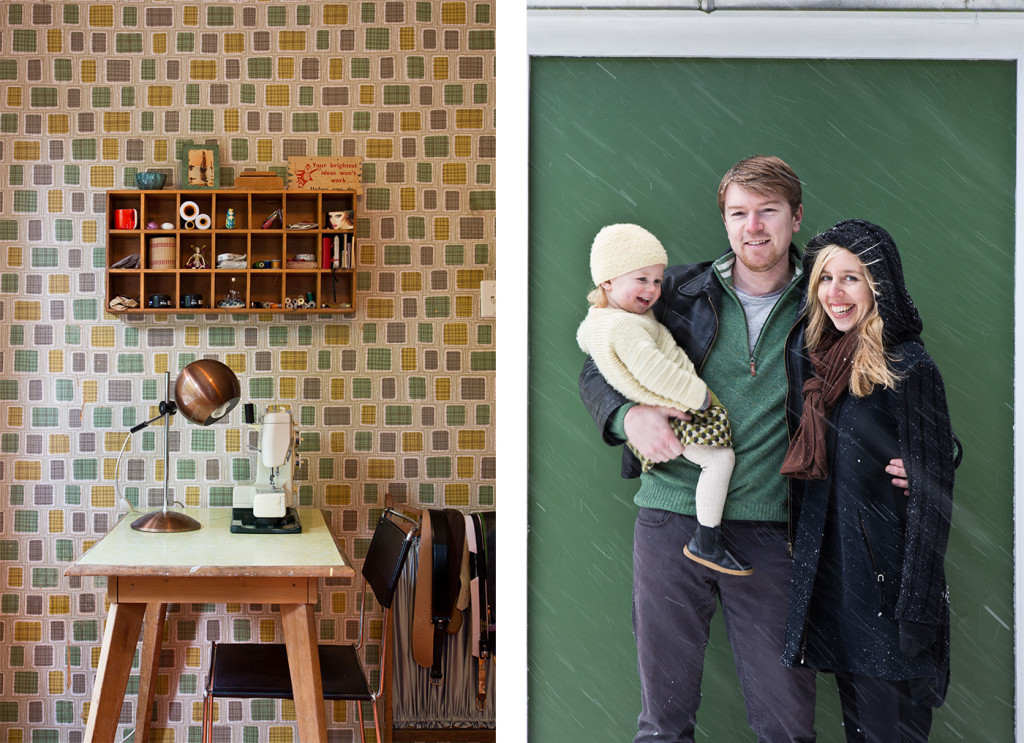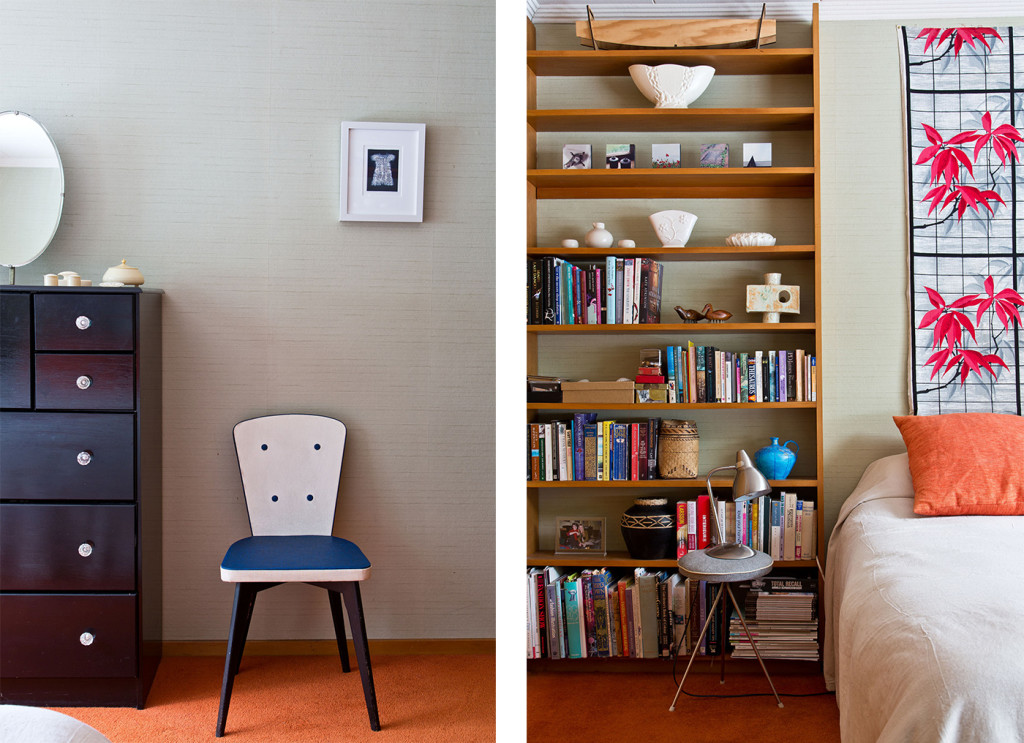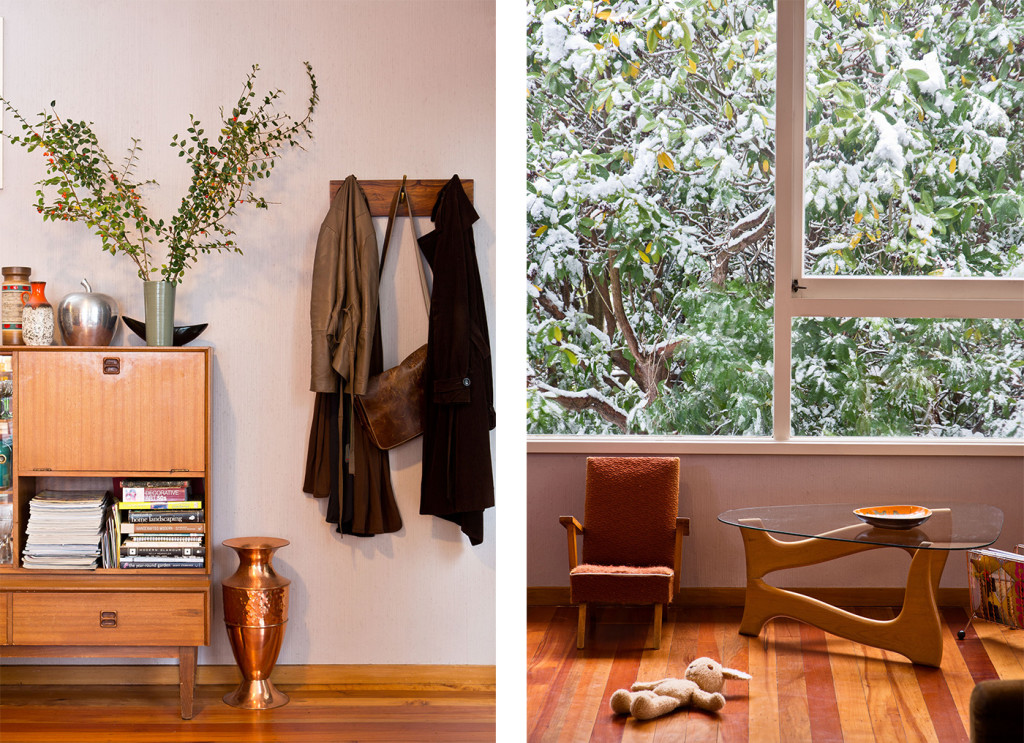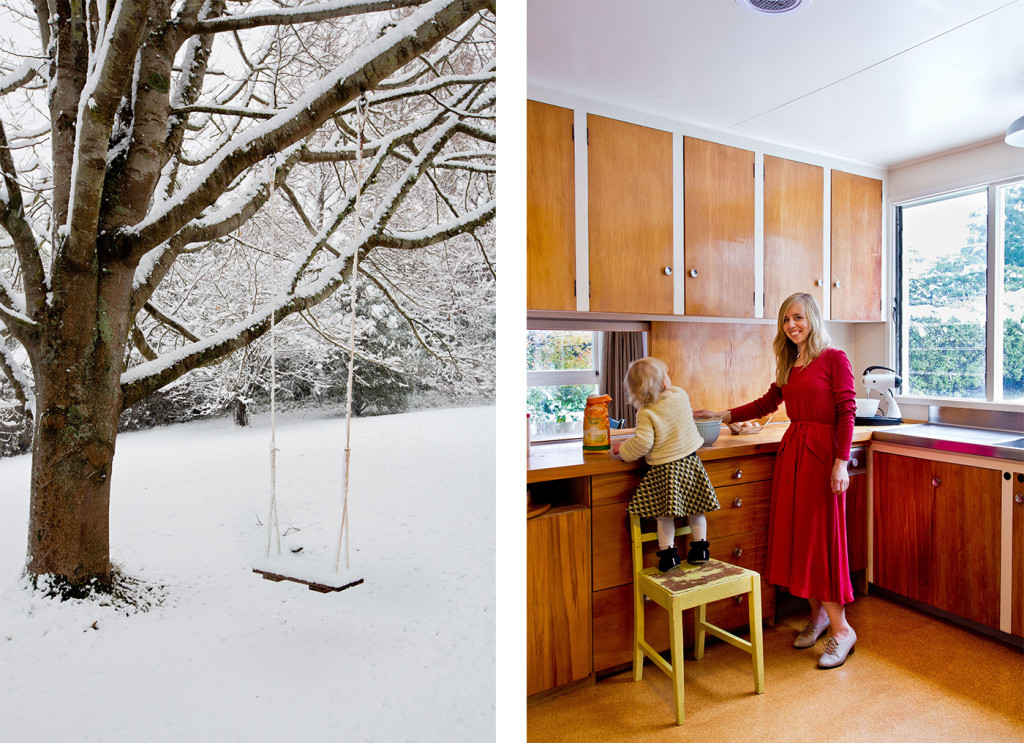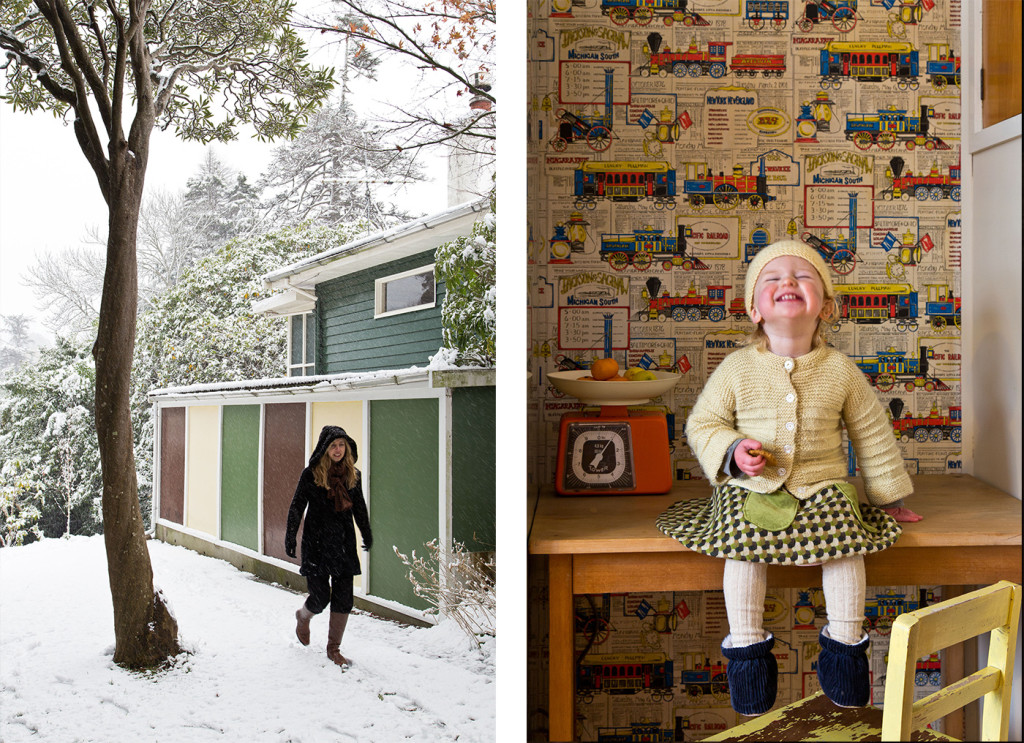Sam and Emily fell easily for the charms of this 1959 modernist home, which has remained virtually unchanged since it was built
Fashion designer Emily Cooper’s 1959 Dunedin pad
By the late 1950s, the idea of living in a modernist way was sweeping the globe. The associated ideas of mass production meant it was possible to buy plans in almost the same way you would purchase a pattern for a dress. This is probably the way Dunedin fashion designer Emily Cooper’s 1959 home came into being: a careful builder, a set of pre-designed plans and a site that, luckily, those plans fit perfectly.
When Emily and her husband, web designer and photographer Sam Clarkson, purchased the house, they were charmed by the fact that it had remained virtually unchanged since it was first constructed. The period wallpapers with their hand-crafted illustrations had been left untouched, and the coloured exterior panels on its southern wall were immaculately maintained. More importantly, its light-filled, open-plan living areas felt just as relevant 50 years after their debut.
“It’s very considered and has a really warm feel,” says Emily. “I like the aesthetic and the layout is really practical.”
The same combination of beauty and practicality is evident in Emily’s work. She is the co-founder, with her father David Cooper, of Silkbody, a clothing label that creates silk and merino garments valued by travellers for their crease-free warmth and practicality.
Her designs also appeal to increasingly diverse customers: a range called Silkbaby is proving popular with new parents; a collaboration with masters students at the University of Otago has resulted in a series of high-performance garments for cycling, mountaineering, hang-gliding and the like, and the company’s silk clothing is now selling internationally on Amazon.
It’s a global company with humble beginnings. In the late 1990s, Emily’s father was given a silk sleeping bag liner that he used while backpacking around the world. He was impressed with how it was easily washable, quick-drying, and ideal in hotter climates. When he reached Hanoi, he found it was possible to purchase them cheaply, so he began importing and distributing them in New Zealand, always ensuring that the people in Vietnam who made them also received the benefits.
Around this time, Emily was doing a degree in clothing and textile science at the University of Otago. When she graduated, she says, “It made sense to do something with silk”. In 2002 she officially teamed up with her father and developed a range of base layer garments for the outdoor market.
“Then people started wearing them as an everyday item, so things sort of grew from there,” Emily says. It grew in the family, too: Emily’s sister Tamsin Cooper is also a fashion designer whose offices are located on the floor below Emily’s in central Dunedin.
Silk is a remarkable fibre, but it had a superficial and problematic drawback: most garments made from it turned out a little shiny for everyday use. After much experimentation, Emily realised that combining it with merino minimised this shininess and gave the fabric bulk, without diminishing any of its other qualities.
Once they’d decided on the right blend (about 15 percent merino), the company took off. Within eight years, Silkbody garments were selling in 15 countries, a number that has since expanded due to online sales. The company’s silk comes from a small region in the eastern Chinese province of Jiangsu, where farmers continue the ancient art of rearing silkworms by feeding them with leaves from clipped, pesticide-free mulberry trees. It’s an area Emily visits regularly to meet with her suppliers. “The land [the silkworm farmers] use is being encroached on by industry, so it feels good to be able to help in keeping these ancient skills alive,” she says.
Emily is that rare designer who seems equally enthusiastic discussing her latest designs as she is her e-commerce initiatives. “A lot of people in the creative business are hopeless business people, but Emily’s an all-rounder,” her father says approvingly. And while she is always looking for ways to expand the business, she is also comfortable that Silkbody isn’t a fashion company desperate for publicity heat: its key customers are often over 50, and are willing to pay a premium for a quality item that looks good, “is practical and they can wear out for dinner” when they’re travelling.
Most recently, the biggest change in Emily and Sam’s life has been the arrival of their daughter Mae, now two years old. She had the good fortune to be born soon after Emily started Silkbaby, so has grown up swaddled in top-notch fabrics. She has also known nothing but the charming house and the pleasures of playing in its large garden and on the swing that hangs from a beautiful liriodendron tree. There is also a maple, a karaka, a pohutukawa, a protected lancewood and a lawsoniana tree on the 1300-square-metre site. It’s an idyllic garden that complements the wholesomeness of the house; an optimistic modernist vision as relevant today as it was when it was dreamed up just over 50 years ago.
HOME What initially drew you to the house?
Emily Cooper, Silkbody I really liked its lines; it had a really warm feel and original features. When I walked in, I had a great feeling about it. It’s very considered and faces the sun. At that time it was built, people were really interested in the new look.
A friend of ours lived up there as a kid and remembers it being built and it being very unusual because it didn’t face the street! The people who built it were heavily involved and did all the concreting. The people we bought it off, their uncle and aunt had built it. We are the third owners.
HOME What have you changed?
Emily Cooper We haven’t done much to it at all. We painted the kitchen cream because it was red. They [the previous owners] thought of everything. It’s lined in Pinex and is really warm, with vents in ceiling and a heatbox. The garden has some protected trees on it and dawn redwoods, which are native to China, and grow in the region where our silks grow. They are really beautiful.
HOME Does the design of the house function well for you?
Emily Cooper The layout is very practical with the shared dining and lounge. The kitchen is separate but with a server – I had always wanted one of those. The laundry cupboard you can access from the hallway and the kitchen, and I actually use it. The laundry is outside but covered in and I also like that aspect.
Words by: Jeremy Hansen. Photograph by: Paul McCredie.
